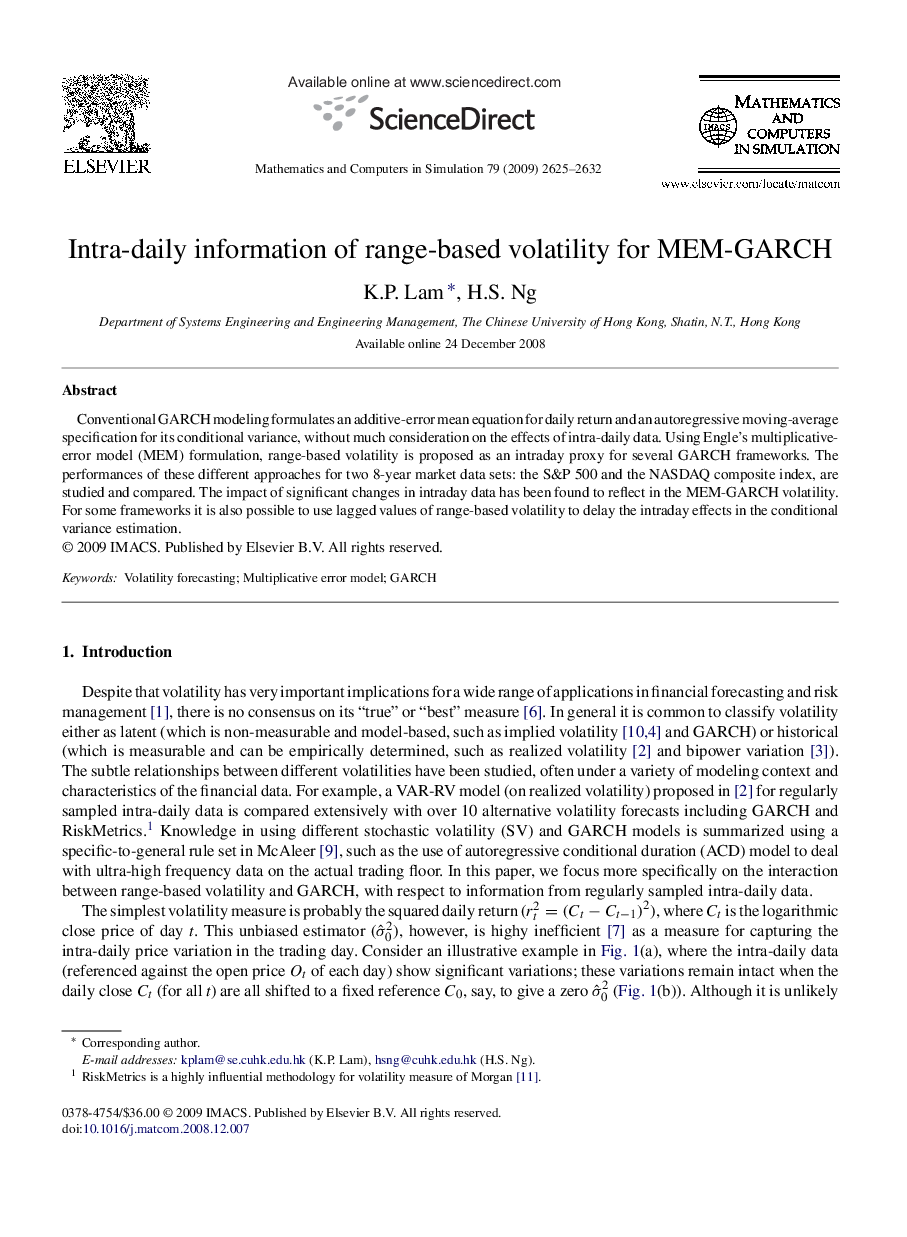| Article ID | Journal | Published Year | Pages | File Type |
|---|---|---|---|---|
| 1140133 | Mathematics and Computers in Simulation | 2009 | 8 Pages |
Conventional GARCH modeling formulates an additive-error mean equation for daily return and an autoregressive moving-average specification for its conditional variance, without much consideration on the effects of intra-daily data. Using Engle’s multiplicative-error model (MEM) formulation, range-based volatility is proposed as an intraday proxy for several GARCH frameworks. The performances of these different approaches for two 8-year market data sets: the S&P 500 and the NASDAQ composite index, are studied and compared. The impact of significant changes in intraday data has been found to reflect in the MEM-GARCH volatility. For some frameworks it is also possible to use lagged values of range-based volatility to delay the intraday effects in the conditional variance estimation.
